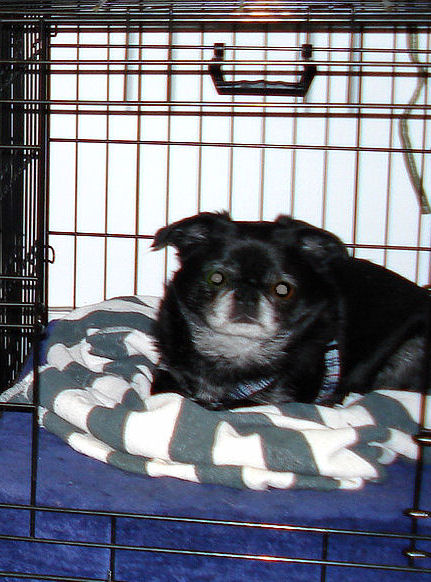Every “stop” in dog training needs to have a paired “go.” Otherwise, how does your dog know to stop doing what you’ve asked? Teaching your dog a release word makes it easy. It’s your dog’s “green light” to stand down from a behavior.
Do what I say
The current trend in dog training is not to actually teach a “stay.” The theory is that if you’ve asked your dog to “Sit!,” they should keep doing that until you tell them to do something else. It’s an interesting idea, but there’s no way it will work unless you also teach your dog a release word.
As long as you’re consistent, it doesn’t matter what word you use: Free, Okay, Go, Cabbage. Remember what it is, and teach your dog to recognize it, your release cue can be any word in any language. Like Humpty Dumpty in Lewis Carroll’s Through the Looking Glass: “When I use a word,’ Humpty Dumpty said in rather a scornful tone, ‘it means just what I choose it to mean — neither more nor less.”
Use it all the time

Start by letting your dog hear his/her release cue for transitions. When you release him/her from the crate, use your release word. If your dog doesn’t move when hearing it, close the crate door and step back. Come back to the crate, open the door and say the release word again. This time your dog should understand that it means “move your butt!”
When you open the door to let your dog out in the yard, use the release word. If you’re practicing a “stay” use it to let your dog know it’s time to move. When you finish a training game, use the release word to tell your dog it’s time to “stand down.” When you’re done practicing polite walking, give the release cue to let your dog know it’s time to sniff and be a dog. (Here’s an article about loose leash walking.)
Perfecting the release
To evaluate your dog’s understanding of his release word, play this stop/go stay game: Set your dog up in a sit, and say “Stay.” Remain with your dog. With a single treat in the hand closest to the dog, raise the treat high over the dog’s head and slowly lower it to him/her. If your dog remains in place, without any movement other than the head, put the treat in your dog’s mouth. If your dog moves, raise the treat up and start over.
After three or four successes, stop lowering the treat at about the halfway point and say your dog’s release word. He/she should jump up and get the treat. Celebrate! Good Dog!
Start the game again, until your 2-Minute session expires. You can vary the position for your dog’s stay – sit, down, or stand are all fine. As a matter of fact, you should practice each of the positions for the stay. Your groomer and veterinarian are always appreciative of dogs who know how to stand still!
Don’t make them think
If you teach your dog a release word, it really helps him. It clarifies behaviors. It sets the boundaries and limits – things dogs really love. If you leave a fuzzy boundary for any behavior, your dog won’t know what you want him/her to do and performance will suffer. Sit really does mean sit. Until you’re released to go about your business.
Many people worry about being “mean” to their dogs by setting strict limits. But dogs appreciate knowing the rules. Remember that dogs are binary creatures: yes or no, black or white, stop or go. They like knowing the right thing to do. Make it easy on your dog. Teach them a release word and let them know.
